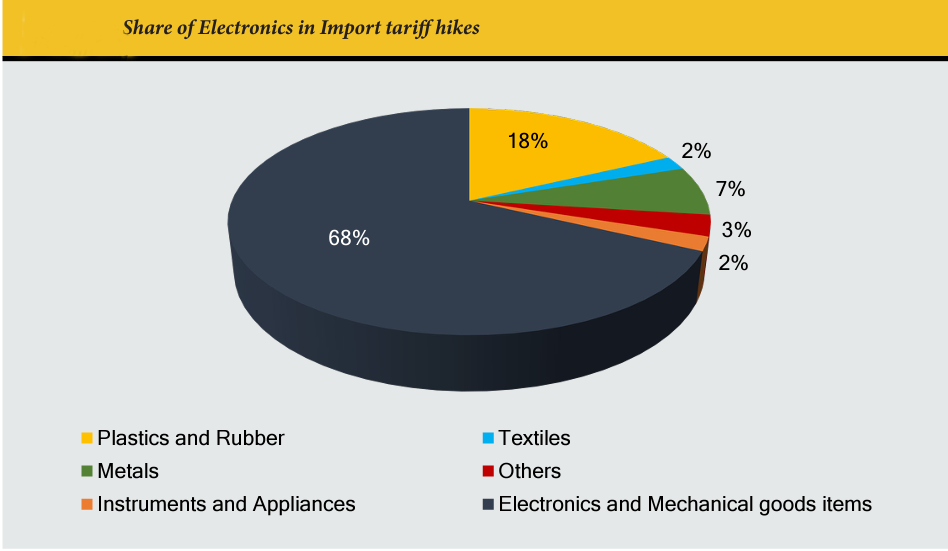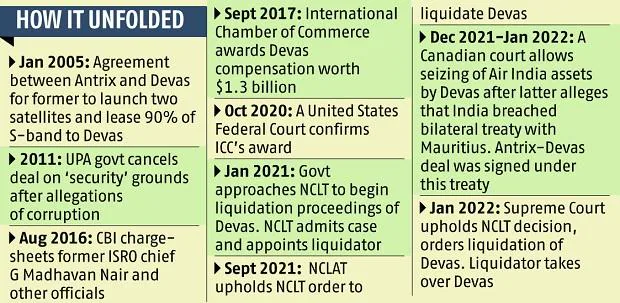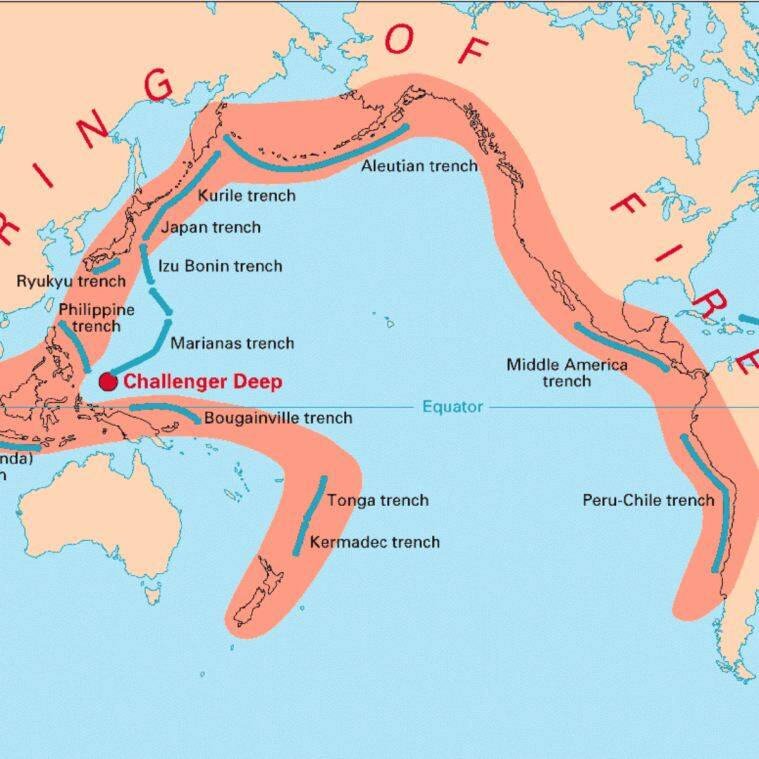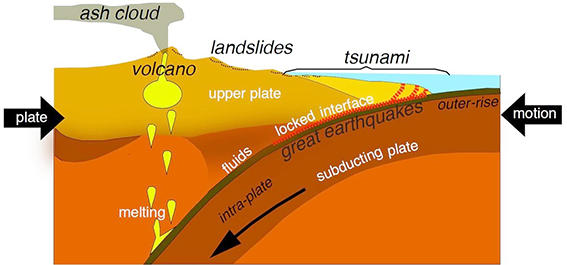Governance
Freedom of Media
For Prelims: Editors Guild of India, Press Council of India (PCI), World Press Freedom Index (WPFI).
For Mains: Freedom of Media & Democracy, Paid News, Biased Media, Fourth Pillar of Democracy
Why in News
Recently, the Editors Guild of India has expressed anguish over the shutting down of the Kashmir Press Club. It held that the shutting down of the Club sets a dangerous precedent for media freedom.
- The Editors Guild was founded in 1978 with the twin objectives of protecting press freedom and raising the standards of editorial leadership of newspapers and magazines.
Key Points
- Freedom of Media & Democracy:
- Free Exchange of Ideas: A free exchange of ideas, free exchange of information and knowledge, debating and expression of different viewpoints is important for the smooth functioning of democracy.
- A free press can inform citizens of their leaders’ successes or failures.
- It conveys the people’s needs and desires to government bodies, making informed decisions and strengthening society as a result.
- It promotes open discussion of ideas that allows individuals to fully participate in political life.
- Making Government Accountable: Free Media makes people question the decisions of the government and make it accountable.
- Voice of Marginalised: The free media by virtue of being the voice of the masses empowers them with the right to express opinions.
- Thus, free media is critical in a democracy.
- Fourth Pillar of Democracy: Due to these attributes, the Media can be rightly considered as the fourth pillar of democracy, the other three being legislature, executive and judiciary.
- Free Exchange of Ideas: A free exchange of ideas, free exchange of information and knowledge, debating and expression of different viewpoints is important for the smooth functioning of democracy.
- Threats to Freedom of Press:
- Fake News: The government’s pressure in the name of regulations, the bombardment of fake news and the influence of social media is dangerous for the occupation.
- Paid News: Corruption-paid news, advertorials and fake news are threats to free and unbiased media.
- Attack Against Journalists: The security of journalists is the biggest issue, killings and assaults on Journalists covering sensitive issues are very common.
- Hate speech shared and amplified on social networks are targeted against journalists using social media.
- Reports such as ‘Freedom in the World 2021 (Freedom House, US)’, ‘2020 Human Rights Report (US State Department)’, ‘Autocratisation Goes Viral (V-Dem Institute, Sweden)’ have all highlighted intimidation of journalists in India.
- Biased Media: Corporate and political power has overwhelmed large sections of the media, both print and visual, which lead to vested interests and destroy freedom.
- Press Freedom in India:
- Romesh Thappar v. State of Madras, 1950: The Supreme Court in Romesh Thappar v. the State of Madras observed that freedom of the press lay at the foundation of all democratic organisations.
- Fundamental Right Under Article 19: The Indian Constitution guarantees freedom of speech and expression under Article 19, which deals with ‘Protection of certain rights regarding freedom of speech, etc.
- Implicit Right: Freedom of the press is not expressly protected by the Indian legal system but it is impliedly protected under article 19(1) (a) of the constitution.
- However, Freedom of the press is also not absolute.
- A law could impose only those restrictions on the exercise of this right, it faces certain restrictions under article 19(2), which is as follows:
- Sovereignty and integrity of India,
- Security of the State,
- Friendly relations with foreign States,
- Public order, decency or morality or in
- Contempt of court,
- Defamation
- Incitement to an offence.
- Press Council of India (PCI)
- It is a regulatory body established under the Press Council of India Act of 1978.
- It aims to preserve the freedom of the press and maintain and improve the standards of newspapers and news agencies in India.
- International Initiative for Freedom of Press
- The Paris based Reporters Without Borders (RSF) publishes annually a World Press Freedom Index (WPFI).
- The index evaluates the level of freedom available to the media in 180 countries, which makes the governments and authorities aware of their policies and regulations against and for freedom of the press.
- India has been ranked at 142nd out of 180 countries in World Press Freedom Index, 2021.
Way Forward
- Strengthening Institutional Framework: The Press Council of India, a regulatory body, can warn and regulate media if it finds that a newspaper or a news agency has violated media ethics.
- Statutory status should be given to the News Broadcasters Association (NBA) which represents the private television news and current affairs broadcasters.
- Tackling Fake News: Countering content manipulation and fake news to restore faith in the media without undermining its freedom will require
- Public education,
- Strengthening of regulations
- Effort of tech companies to make suitable algorithms for news curation.
- Adherence to Media Ethics: It is important that the media stick to the core principles like truth and accuracy, transparency, independence, fairness and impartiality, responsibility and fair play.
Governance
Hunger in India
For Prelims: Hunger and related initiatives, Community Kitchen and related schemes in different states
For mains: Hunger and malnutrition in India, Related government Initiatives, Way forward for the situation
Why in News
Recently, the Union government informed the Supreme Court (SC) that no starvation death (Death by Hunger) has been reported by any state or Union territory (UT) in recent years.
Key Points
- The Petition:
- The court is hearing a petition that highlights how starvation deaths continue to eat into the right to life and dignity of social fabric and a “radical” new measure like community kitchens need to be set up across the country to feed the poor and the hungry.
- The petition also referred to Rajasthan’s Annapurna Rasoi, Indira Canteens in Karnataka, Delhi’s Aam Aadmi Canteen, Anna Canteen of Andhra Pradesh, Jharkhand Mukhyamantri Dal Bhat and Odisha’s Ahaar Centre.
- SC’s Ruling:
- The SC asked the Centre to explore the possibility of a “model” community kitchen scheme by which it could support the States to ensure food security for the poor.
- It asked the Centre to make a model scheme and leave it to the States to follow the guidelines depending on their individual food habits.
- Called for the creation of a national food grid by the Centre which is beyond the scope of the Public Distribution Scheme.
Hunger in India
- Related Data:
- Food and Agriculture Report, 2018 stated that India houses 195.9 million of the 821 million undernourished people in the world, accounting for approximately 24% of the world’s hungry. Prevalence of undernourishment in India is 14.8%, higher than both the global and Asian average.
- It had been reported in 2017 by the National Health Survey that approximately 19 crore people in the country were compelled to sleep on an empty stomach every night.
- Moreover, the most alarming figure revealed is that approximately 4500 children die every day under the age of five years in the country due to hunger and malnutrition, amounting to over three lakh deaths every year, owing to hunger, of children alone.
- India slipped to 101st position in the Global Hunger Index (GHI) 2021 of 116 countries, from its 2020 position of 94th.
- Causes of Malnutrition:
- There are multiple dimensions of malnutrition in India that include
- Calorific deficiency- Though the government has surplus of foodgrains, there is calorific deficiency because the allocation and distribution is not proper. Even the yearly budget allocated is not fully utilised.
- Protein hunger- Pulses are a major contributor to address protein hunger. However, there is not enough budgetary allocations done to tackle the problem. With Eggs missing from menus of Mid-day Meals in various States, an easy way to improve protein intake is lost.
- Micronutrient deficiency (also known as hidden hunger): India faces a severe crisis in micronutrient deficiency. Its causes include poor diet, disease, or increased micronutrient needs not met during pregnancy and lactation.
- Other factors:
- Poor access to safe drinking water and
- Poor access to Sanitation (especially toilets),
- Low levels of immunisation and
- Education, especially of women.
- There are multiple dimensions of malnutrition in India that include
- Government Interventions
- Eat Right India Movement: An outreach activity organised by the Food Safety and Standards Authority of India (FSSAI) for citizens to nudge them towards eating right.
- POSHAN Abhiyan: Launched by the Ministry of Women and Child Development in 2018, it targets to reduce stunting, undernutrition, anaemia (among young children, women and adolescent girls).
- Pradhan Mantri Matru Vandana Yojana: A centrally sponsored scheme executed by the Ministry of Women and Child Development, is a maternity benefit programme being implemented in all districts of the country with effect from 1st January, 2017.
- Food Fortification: Food Fortification or Food Enrichment is the addition of key vitamins and minerals such as iron, iodine, zinc, Vitamin A & D to staple foods such as rice, milk and salt to improve their nutritional content.
- National Food Security Act, 2013: It legally entitled up to 75% of the rural population and 50% of the urban population to receive subsidised food grains under the Targeted Public Distribution System.
- Mission Indradhanush: It targets children under 2 years of age and pregnant women for immunisation against 12 Vaccine-Preventable Diseases (VPD).
- Integrated Child Development Services (ICDS) Scheme: Launched in 1975, the ICDS Scheme offers a package of six services to children in the age group of 0-6 years, pregnant women and lactating mothers.
Way Forward
- Linking of Schemes: Agriculture-Nutrition linkage schemes have the potential for greater impact in dealing with malnutrition and thus, needs greater emphasis.
- Early fund disbursement: The government needs to ensure early disbursement of funds and optimum utilisation of funds in schemes linked to nutrition.
- Underutilisation of Resources: It has been pointed out many times that expenditure made under many nutrition-based schemes is considerably lower than what was allocated under them. Thus, emphasis needs to be on implementation.
- Convergence with other Schemes: Nutrition goes beyond just food, with economic, health, water, sanitation, gender perspectives and social norms contributing to better nutrition. This is why the proper implementation of other schemes can also contribute to better nutrition.
- PM Poshan Scheme: The PM Poshan Scheme aims to enhance the nutrition of school children by providing a balanced diet in schools. By including milk and eggs in each states’ menu, preparing a menu based on climatic conditions, local foods etc. can help in providing the right nutrition to children in different States.

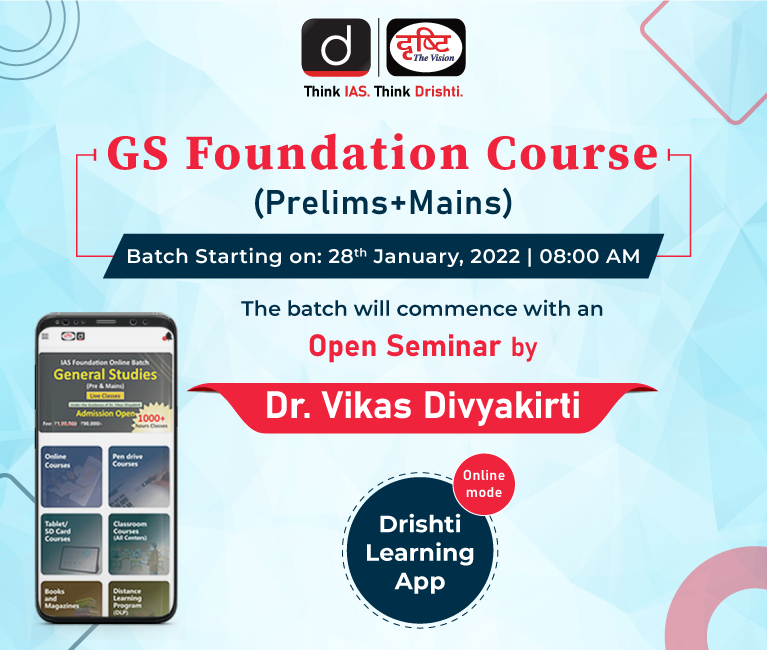
Indian Economy
Counterproductive High Tariffs on Electronic Components
For Prelims: Electronic Sector, Related Initiatives, Growth in the Electronic sector, Indian Cellular and Electronics Association.
For mains: India’s Electronic sector and issues related to it, Related Initiatives, India’s electronic sector vs other countries.
Why in News
Recently, a report by the Indian Cellular and Electronics Association (ICEA) has said that India’s policy of adopting high tariffs on the import of electronics components may prove to be counterproductive.
- ICEA is the apex industry body of the mobile and electronics industry comprising manufacturers.
Key Points
- High Tariffs:
- India has adopted high tariffs on the import of electronics components to reduce risks from global competition and save domestic companies.
- However, it may prove to be counterproductive to its schemes aimed at increasing domestic production of electronic products.
- India has adopted high tariffs on the import of electronics components to reduce risks from global competition and save domestic companies.
- India vs Other Nations: All the countries have tried to encourage the domestic production of electronic goods in their geographies by adopting almost similar strategies such as attracting Foreign Direct Investment (FDI), improving domestic capabilities and competitiveness, increasing exports and then linking their markets with global value chains.
- China: Since 1980 China has improved its ranking in terms of office and telecom equipment export from 35 to 1, while Vietnam, which did not export any such electronic products up until 1990s has climbed the ladder to become the eight largest export in just 20 years.
- Mexico: Similarly, Mexico, which was 37th in terms of electronics product export in the 1980s has steadily risen through the ranks to gain 11th place, a position it has maintained over the last two decades.
- Thailand: It ranked 45 in 1980, has also consolidated its position in the top 15 electronic product exporters, according to the report.
- India: On the other hand, India, which started at 40th position in the 1980s has gained and lost positions to reach 28th position by 2019.
- High Tariffs and India’s Loss:
- Though all the countries followed nearly the same policy to boost domestic electronics manufacturing, one major difference between India and the rest of the countries was heavy reliance on tariffs.
- It is due to such high tariffs that investors and electronic component makers from global markets shy away from India as a market since the participation of the country in global value chains has remained low.
- Further, despite the size of the Indian economy, its participation in exports and international trade has remained low.
- Even for the domestic markets, the assumption that it will be beneficial to most companies since it is large and growing is wrong.
- For example, in the case of mobile phones, where one of the largest PLI schemes is currently operational, the size of the domestic market is expected to increase to USD 55 billion by 2025-26, whereas the global market is expected to reach USD 625 billion by the same time.
- Thus, at present, the Indian domestic market is about 6.5% of the global market, with a possibility of growing to 8.8%, if the growth forecasts are reasonably robust.
- At present, India’s market share is not attractive enough for FDI to choose India as a location primarily on the basis of its domestic market per se, especially if India’s policies result in cost inefficiencies which create obstacles to accessing a much larger global market.
- Counterproductivity of PLI Scheme:
- One of the major reasons why the report concluded that a high tariff on the import of electronic components may end up undoing the gains of Production Linked Incentive (PLI) schemes is that companies which have extensive global value chains are reluctant to enter India when tariffs for components are high.
- While the large electronics markets of India may look attractive, they are very small in global terms. Moreover, India does not produce about 50% of the components on which tariff has been increased. Hence the impact of tariffs is likely to be adverse on India’s competitiveness.
- Although globally companies such as the US are increasing tariffs on the import of electronic components, India must keep its tariff at a bare minimum to ensure it remains competitive among its peers in the Asian neighbourhood.
- Related Initiatives:
India’s Electronic Sector
- The Indian electronics sector is tremendously growing with the demand expected to cross USD 400 billion by 2023-24.
- Domestic production has grown from USD 29 billion in 2014-15 to nearly USD 70 billion in 2019-20 (Compounded Annual Growth Rate of 25%).
- Most of this production takes place in the final assembly units (last-mile industries) located in India and focussing on them would help develop deep backward linkages, thus inducing industrialisation.
- This was an idea propounded by economist Albert O Hirschman in his theory of ‘Unbalanced Growth’.
- The Economic Survey 2019-20 also promoted this idea and suggested “assembly in India for the world”, especially in “networked products”, in a bid to create four crore well-paid jobs by 2025 and eight crore jobs by 2030.


Governance
National Commission for Safai Karamcharis
For Prelims: NCSK, Prohibition of Employment as Manual Scavengers and their Rehabilitation Act, 2013.
For Mains: Significance of NCSK in uplifting Lives of Manual Scavengers.
Why in News
The Union Cabinet has approved the extension of the tenure of the National Commission for Safai Karamcharis (NCSK) for three years beyond 31st March, 2022.
- The major beneficiaries would be the Safai Karamcharis and identified manual scavengers in the country.
- Manual scavenging is defined as “the removal of human excrement from public streets and dry latrines, cleaning septic tanks, gutters and sewers”.
Key Points
- About:
- The NCSK was established in the year 1993 as per the provisions of the NCSK Act 1993 to give its recommendations to the Government regarding specific programmes for welfare of Safai Karamcharis.
- The NCSK Act ceased to have effect from 29th February, 2004. After that the tenure of the NCSK has been extended as a non-statutory body from time to time through resolutions.
- It studies and evaluates the existing welfare programmes for Safai Karamcharis, investigates cases of specific grievances etc.
- As per the provisions of the Prohibition of Employment as Manual Scavengers and their Rehabilitation Act, 2013, the NCSK has been assigned the work to monitor the implementation of the Act, tender advice for its effective implementation to the Center and State Governments and enquire into complaints regarding contravention/non-implementation of the provisions of the Act.
- The Chairperson and Members of the Commission undertake extensive touring of the country to study the socio-economic and living conditions of Safai Karamcharis and their dependents.
- The Commission calls for the factual reports in connection with these complaints/petitions from the concerned authorities and impress upon them to redress the grievances of the affected Safai Karamcharis.
- The NCSK was established in the year 1993 as per the provisions of the NCSK Act 1993 to give its recommendations to the Government regarding specific programmes for welfare of Safai Karamcharis.
- Status:
- As per the NCSK (2020 data), a total of 631 people have died in the country while cleaning sewers and septic tanks in the last 10 years.
- 2019 saw the highest number of manual scavenging deaths in the past five years. 110 workers were killed while cleaning sewers and septic tanks.
- This is a 61% increase as compared to 2018, which saw 68 cases of such similar deaths.
- As per data collected in 2018, 29,923 people were engaged in manual scavenging in Uttar Pradesh, making it the highest in any State in India.
- As per the NCSK (2020 data), a total of 631 people have died in the country while cleaning sewers and septic tanks in the last 10 years.
- Related Schemes:
- Prevention of Atrocities Act:
- In 1989, the Prevention of Atrocities Act became an integrated guard for sanitation workers; more than 90% people employed as manual scavengers belonged to the Scheduled Caste. This became an important landmark to free manual scavengers from designated traditional occupations.
- Safaimitra Suraksha Challenge:
- It was launched by the Ministry of Housing and Urban Affairs on World Toilet Day (19th November) in 2020.
- The Government launched this “challenge” for all states to make sewer-cleaning mechanized by April 2021 — if any human needs to enter a sewer line in case of unavoidable emergency, proper gear and oxygen tanks, etc., are to be provided.
- ‘Swachhta Abhiyan App’:
- It has been developed to identify and geotag the data of insanitary latrines and manual scavengers so that the insanitary latrines can be replaced with sanitary latrines and rehabilitate all the manual scavengers to provide dignity of life to them.
- National Safai Karamcharis Finance and Development Corporation:
- It is a not-for-profit company under the Ministry of Social Justice and Empowerment.
- The primary objective of this corporation is to uplift the Safai Karamcharis, Scavengers and their dependents socially and economically.
- SC Judgment:
- In 2014, a Supreme Court order made it mandatory for the government to identify all those who died in sewage work since 1993 and provide Rs. 10 lakh each as compensation to their families.
- Prevention of Atrocities Act:
Prohibition of Employment of Manual Scavengers and their Rehabilitation Act, 2013
- The Act prohibits employment of manual scavengers, manual cleaning of sewers and septic tanks without protective equipment, and the construction of insanitary latrines.
- No person, local authority or agency (like Municipal Corporations) should engage or employ people for hazardous cleaning of sewers and septic tanks. Mechanized cleaning of septic tanks is the prescribed norm.
- It seeks to rehabilitate manual scavengers and provide for their alternative employment. Each local authority, cantonment board, and railway authority is responsible for surveying insanitary latrines within its jurisdiction. They shall also construct a number of sanitary community latrines.
- Each occupier of insanitary latrines shall be responsible for converting or demolishing the latrine at his own cost. If he fails to do so, the local authority shall convert the latrine and recover the cost from him.
- The Prohibition of Employment as Manual Scavengers and their Rehabilitation (Amendment) Bill, 2020 has been introduced.

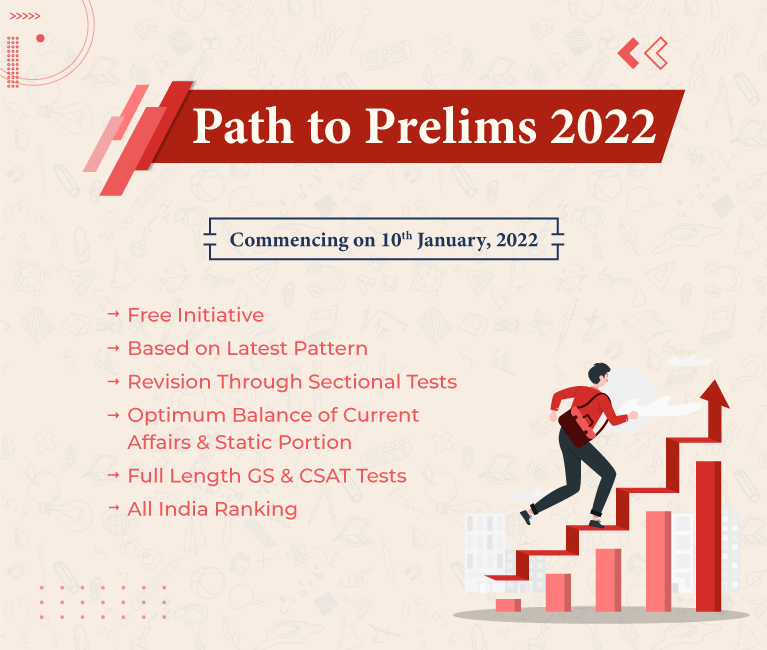
International Relations
Devas-Antrix Deal
For Prelims: Antrix Corporation, S-band transponders, International Telecommunication Union, ICC, NCLAT, NCLT.
For Mains: Growth of Communication Systems.
Why in News
The controversial deal between Indian Department of Space’s commercial entity Antrix and Bengaluru-based startup Devas Multimedia has been under the scanner for more than a decade now.
Key Points
- Allocation of Spectrum: The International Telecommunication Union granted India S-band spectrum in the 1970s.
- Handing Over of Spectrum to ISRO: By 2003, there was a fear that the spectrum would be lost if not used effectively;
- 40 MHz of S-band was given to the Department of Telecom (DoT) for terrestrial use.
- 70 Mhz was to be put to efficiently used by the Department of Space (DoS) or in effect to be used by Indian Space Research Organisation (ISRO).
- Global Negotiations for Growth of Communication Systems: Initially, an MoU was signed by Forge (a US Consultancy) and Antrix in July 2003 for use of the satellite spectrum for the growth of communication systems in India, but later a start-up was envisaged, and Devas Multimedia was floated.
- Following this, Devas Multimedia was able to attract foreign investors.
- Signing of the Deal: In 2005, the deal was signed to provide multimedia services to mobile users using the leased S-band satellite spectrum.
- Under the deal, ISRO would lease to Devas two communication satellites (GSAT-6 and 6A) for 12 years.
- In return, Devas would provide multimedia services to mobile platforms in India using S-band transponders on the satellites.
- As a result of the deal, Devas introduced and utilised technologies like never before and was a huge revenue generator for Antrix.
- Scrapping of the Deal: The deal was cancelled in 2011 on the ground that the auction of the broadband spectrum was mired in fraud.
- The decision was taken in the midst of the 2G scam and allegations that the Devas deal involved the handing over of communication spectrum valued at nearly Rs 2 lakh crore for a pittance.
- The government also held that it needed the S-band satellite spectrum for national security and other social purposes.
- Filling of Corruption Charges: Meanwhile, in August 2016, the Central Bureau of Investigation (CBI) filed a charge sheet against officials from Devas, ISRO and Antrix linked to the deal for “being party to a criminal conspiracy”.
- Amongst them, were the former ISRO chairman G Madhavan Nair and former Antrix executive director K R Sridharamurthi.
- International Tribunal Arbitration: Devas Multimedia initiated arbitration against the annulment at the International Chambers of Commerce (ICC).
- Two separate arbitrations were also initiated under the Bilateral Investment Treaty (BIT) by Mauritius investors in Devas Multimedia under the India-Mauritius BIT and by Deutsche Telekom -- a German company -- under the India- Germany BIT.
- India lost all three disputes and has to pay a total of USD 1.29 billion in damages.
- Aftermath of Tribunal Award: Due to the Indian Government not paying the compensation, a French court has recently ordered the freezing of Indian government property in Paris, to enforce a USD 1.3 billion arbitration award.
- Indian Arbitration Scenario: Recently, the Supreme Court reiterated the Government’s 2011 stance and directed the winding up of Devas Multimedia business in India.
- The Supreme Court also upheld the previous award by the National Company Law Appellate Tribunal (NCLAT) and National Company Law Tribunal (NCLT).
- Antrix filed a plea in the NCLT in January 2021 for the liquidation of Devas in India, which it said was incorporated in a fraudulent manner.
- These tribunals directed the winding up of Devas Multimedia and appointed a provisional liquidator for the purpose.
Seizure of Property by Foreign Countries
- The state and its property are protected against legal proceedings in the courts of other countries.
- This emanates from a well-established principle of international law, referred to as State immunity.
- This covers immunity from both jurisdiction and execution.
- However, there is no international legal instrument in force dealing with state immunity in the municipal legal systems of different countries.
- This has created an international void.
- Consequently, countries have filled this void through their national legislations and domestic judicial practices on state immunity.
- Countries like France, follow the concept of restrictive immunity (a foreign State is immune only for sovereign functions) and not absolute immunity (total immunity from all legal proceedings in a foreign court).
- In the context of the execution of BIT awards, it implies that state property serving sovereign functions (diplomatic mission buildings, central bank assets, etc.) cannot be attached.
- However, properties serving commercial functions are available for seizure.
S-band Spectrum
- The S-band spectrum, which is part of the Devas-ISRO deal, is extremely valuable for mobile broadband services, in terms of usage as well as money.
- The frequency, also known as 2.5 Ghz band, is globally used for providing mobile broadband services using fourth generation technologies such as WiMax and Long Term Evolution (LTE).
- This frequency band is unique because it has a substantial amount of spectrum (190 MHz) that can be put to use for mobile services.
Bilateral Investment Treaty
- An agreement made between two countries containing reciprocal undertakings for the promotion and protection of private investments made by nationals of the signatories in each other's territories.
- BITs provide protection against illegal nationalisation and expropriation of foreign assets and other actions by a signatory of the BIT that may undermine the ownership or economic interest of a national of the other signatory.
- One of the main protections under a BIT is that it allows foreign investors to sue states directly by submitting claims for breach of the BIT to arbitration rather than to local courts.
Antrix Corporation Limited
- Antrix Corporation Limited (ACL), Bengaluru is a wholly owned Government of India Company under the administrative control of the Department of Space.
- It was incorporated as a private limited company owned by Government of India in September 1992.
- It is a marketing arm of ISRO for promotion and commercial exploitation of space products, technical consultancy services and transfer of technologies developed by ISRO.
- Another major objective is to facilitate development of space related industrial capabilities in India.
International Telecommunication Union
- It is the United Nations specialized agency for information and communication technologies – ICTs.
- It is the oldest among all the 15 specialized agencies of the UN.
- Founded in 1865 to facilitate international connectivity in communications networks, it allocates global radio spectrum and satellite orbits, develops the technical standards that ensure networks and technologies seamlessly interconnect, and strives to improve access to ICTs to underserved communities worldwide.
- Based in Geneva, Switzerland, it is also a member of the United Nations Development Group and has 12 regional and area offices in the world.
- Its membership includes 193 Member States and around 800 public and private sector companies and academic institutions as well as international and regional telecommunication entities.
- Recently, India got elected as a member of ITU Council for another 4-year term - from 2019 to 2022. India has remained a regular member since 1952.
International Chamber of Commerce (ICC)
- ICC is the world’s largest business organization working to promote international trade and responsible business conduct.
- It has been helping to resolve difficulties in international commercial and business disputes to support trade and investment since 1923.
- ICC headquarters is in Paris, France.


Geography
Pacific Ring of Fire
For Prelims: Pacific Ring of Fire, Volcano, Earthquakes, Tectonic Plates, Subduction.
For Mains: Features and Causes of Frequent Earthquakes in the Pacific Ring of Fire.
Why in News
The Pacific ‘Ring of fire’ is situated just over 60 kilometers from the island nation of Tonga, where recently Hunga Tonga-Hunga Ha’apai volcano erupted sending ash and smoke thousands of feet into the air.
Key Points
- About:
- Also called Pacific rim or the Circum-Pacific Belt, is an area along the Pacific Ocean that is characterized by active volcanoes and frequent earthquakes.
- It is home to about 75% of the world’s volcanoes – more than 450 volcanoes. Also, about 90% of the world’s earthquakes occur here.
- Geographical Stretch:
- The Ring of Fire is stretched to approximately 40,000 kilometers tracing boundaries between several tectonic plates including the Pacific, Juan de Fuca, Cocos, Indian-Australian, Nazca, North American, and Philippine Plates.
- The chain runs up along the western coast of South and North America, crosses over the Aleutian Islands in Alaska, runs down the eastern coast of Asia past New Zealand and into the northern coast of Antarctica.
- Bolivia, Chile, Ecuador, Peru, Costa Rica, Guatemala, Mexico, United States, Canada, Russia, Japan, Philippines, Australia, Papua New Guinea, Indonesia, New Zealand, and Antarctica are some of the important places located in the ring of the fire.
- Causes of Volcanic Activity:
- Tectonic plates move towards each other creating subduction zones. One plate gets pushed down or is subducted by the other plate. This is a very slow process – a movement of just one or two inches per year.
- As this subduction happens, rocks melt, become magma and move to Earth’s surface and cause volcanic activity.
- In the case of Tonga, the Pacific Plate was pushed down below the Indo-Australian Plate and Tonga plate, causing the molten rock to rise above and form the chain of volcanoes.
- Recent Research:
- The Pacific Plate, which drives much of the tectonic activity in the Ring of Fire, is cooling off.
- Scientists have discovered that the youngest parts of the Pacific Plate (about 2 million years old) are cooling off and contracting at a faster rate than older parts of the plate (about 100 million years old).
- The younger parts of the plate are found in its northern and western parts, the most active parts of the Ring of Fire.
- Subduction happens when tectonic plates shift, and one plate is pushed under another. This movement of the ocean floor produces a "mineral transmutation", which leads to the melting and solidification of magma i.e., the formation of volcanoes.
- In other words, when a "downgoing" oceanic plate is pushed into a hotter mantle plate, it heats up, volatile elements mix, and this produces the magma. The magma then rises up through the overlying plate and spurts out at the surface.
- A subduction zone is the biggest crash scene on Earth. These boundaries mark the collision between two tectonic plates.
- When two tectonic plates meet at a subduction zone, one bends and slides underneath the other, curving down into the mantle, the hotter layer under the crust.


Important Facts For Prelims
Eastern Swamp Deer
Why in News
Recently, the population of the vulnerable eastern swamp deer has dipped in the Kaziranga National Park and Tiger Reserve (Assam). The eastern swamp deer is extinct elsewhere in South Asia.
- This decline can be attributed to two high floods in 2019 and 2020.
- However, on the brighter side, the eastern swamp deer has now been distributed to areas beyond the Kaziranga National Park, such as Orang National Park and Laokhowa-Burachapori wildlife sanctuaries (Assam).
Key Points
- About Swamp Deer: There are three subspecies of swamp deer found in the Indian Subcontinent.
- The western swamp deer (Rucervus duvaucelii) found in Nepal.
- Southern swamp deer/Hard Ground Barasingha (Rucervus duvaucelii branderi) found in central and north India.
- Eastern swamp deer (Rucervus duvaucelii ranjitsinhi) found in the Kaziranga (Assam) and Dudhwa National Parks (Uttar Pradesh).
- Protection Status of Swamp Deer:
- IUCN Red List: Vulnerable
- CITES: Appendix I
- Wildlife Protection Act, 1972: Schedule I


Important Facts For Prelims
SaaRthi Mobile App
Why in News
Recently, Securities and Exchange Board of India (SEBI) has launched Saa₹thi – a mobile app on investor education.
- ‘R’ represents ‘₹’.
Key Points
- About:
- It aims to create awareness among investors about the basic concepts of the securities market.
- The app will also explain about KYC process, trading and settlement, Mutual Funds (MF), recent market developments, investor grievances redressal mechanism, etc.
- Need:
- A recent surge is seen in individual investors entering the market, and more importantly a large proportion of trading being mobile phone based.
- According to NSE (National Stock Exchange) data, the share of Individual investors increased to 45% in 2021 from 39% in 2020.
- The NSE is India's largest financial market.
- Securities Market:
- Securities are financial instruments issued to raise funds.
- The primary function of the securities markets is to enable the flow of capital from those that have it to those that need it.
- Securities markets provide channels for allocation of savings to investments and thereby decouple these two activities.
- As a result, the savers and investors are not constrained by their individual abilities, but by the economy’s abilities to invest and save respectively, which inevitably enhances savings and investment in the economy.
- Eg. Equity, Debt securities, etc.
Securities and Exchange Board of India (SEBI)
- SEBI is a statutory body established on 12th April 1992 in accordance with the provisions of the Securities and Exchange Board of India Act, 1992.
- Its basic function is to protect the interests of investors in securities and to promote and regulate the securities market.
- SEBI Board consists of a Chairman and several other whole time and part time members.
- SEBI also appoints various committees, whenever required to look into the pressing issues of that time.



